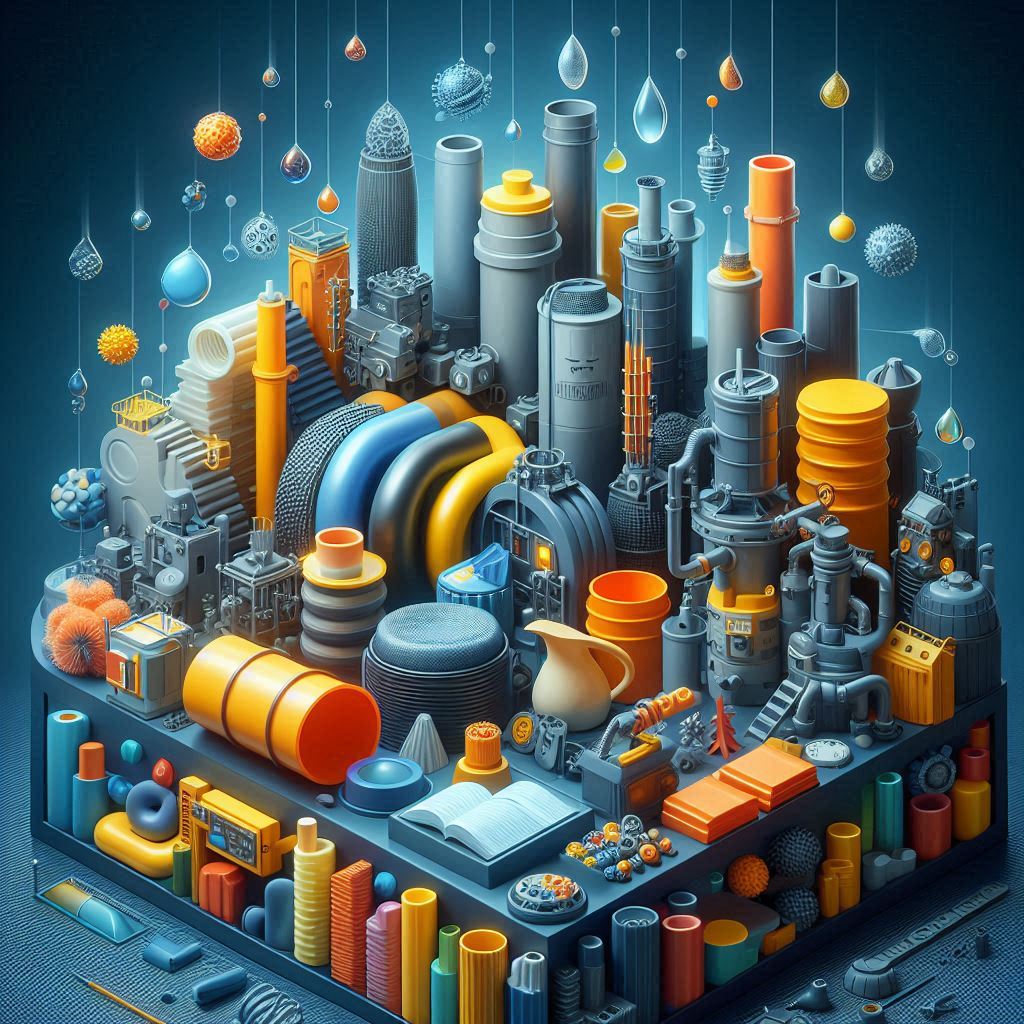Polyvinyl Chloride, or PVC, is a material that has revolutionized countless industries. Its versatility, affordability, and impressive range of properties have made it a cornerstone in everything from construction to healthcare. This ultimate guide dives deep into PVC chloride, exploring its creation, key characteristics, various industrial applications, and its environmental considerations.
Understanding PVC Chloride: From Monomers to Material
PVC’s journey begins with vinyl chloride monomer, a chemical compound derived from chlorine and ethylene. Through a process called polymerization, these monomers link together to form long chains, creating the PVC polymer. Manufacturers then incorporate additives like plasticizers, stabilizers, and lubricants to modify the material’s final properties for specific applications.
The Arsenal of Advantages: Why PVC Reigns Supreme
PVC’s reign in industrial applications stems from its impressive arsenal of properties:
- Durability: PVC boasts exceptional resistance to corrosion, chemicals, abrasion, and weathering. This makes it ideal for long-lasting industrial components.
- Versatility: Manufacturers can formulate PVC to be rigid or flexible, flame-retardant, or even transparent by adjusting the types and amounts of additives. This allows it to cater to a vast array of industrial needs.
- Cost-Effectiveness: PVC is a relatively inexpensive material to produce and fabricate. This translates to cost-efficient solutions for industrial applications.
- Workability: PVC can be easily processed using various techniques like extrusion, injection molding, and calendering. This allows for the creation of complex shapes and components.
- Electrical Insulation: PVC is a good electrical insulator, making it suitable for applications involving wires and cables.
- Lightweight: Compared to many traditional materials, PVC offers significant weight reduction benefits.
The Industrial Landscape of PVC: A Realm of Diverse Applications
PVC’s diverse properties translate into a wide range of industrial applications. Here’s a glimpse into some key sectors:
- Construction: PVC pipes are a popular choice for plumbing, drainage, and electrical conduit systems due to their durability, leak resistance, and ease of installation.
- Building and Infrastructure: PVC sheets and profiles are used for roofing membranes, window and door frames, and wall cladding, offering weather resistance and cost advantages.
- Automotive: PVC finds use in car interiors like dashboards, door trims, and wire insulation, providing a balance of aesthetics, functionality, and affordability.
- Medical and Pharmaceutical: Sterile PVC is used in tubing, blood bags, and IV catheters due to its biocompatibility and clarity.
- Electronics: PVC cable insulation protects electrical wires and circuits, ensuring safety and functionality.
- Flooring and Interiors: PVC flooring offers durability, water resistance, and a variety of design options for commercial and residential spaces.
- Signage and Displays: PVC sheets are used for durable and lightweight signage due to their ease of fabrication and printability.

Environmental Considerations: A Responsible Approach
The widespread use of PVC has led to discussions about its environmental impact. Here’s a balanced perspective:
- Sustainability Concerns: PVC production can involve chlorine, which raises concerns about potential environmental hazards during manufacturing. Additionally, disposal of PVC waste requires careful management to avoid environmental contamination.
- Regulations and Improvements: Stricter environmental regulations are driving the development of greener PVC production processes and the exploration of bio-based alternatives.
- Recycling Initiatives: Recycling programs for PVC are becoming increasingly available, offering a sustainable solution for post-consumer waste.
The Future of PVC: Innovation and Sustainability
The future of PVC is one of continuous improvement. Here are some key trends to watch:
- Focus on Sustainability: Manufacturers are exploring ways to reduce the environmental footprint of PVC production and promote recycling initiatives.
- Bio-Based Alternatives: The development of bio-based PVC using renewable resources holds promise for a more sustainable future.
- Improved Efficiency: Advancements in processing techniques aim to optimize PVC production and reduce waste.
- New Applications: Research and development are continually exploring new and innovative applications for PVC in various industries.
Conclusion: PVC Chloride – A Material for the Future
PVC remains a valuable material for countless industrial applications. Its versatility, affordability, and impressive properties continue to make it a reliable choice. As the industry focuses on sustainability and innovation, PVC is poised to evolve and remain a key player in the industrial landscape for years to come.
Beyond the Basics:
This guide provides a comprehensive overview of PVC for industrial use. For further exploration, consider delving into these areas:
- Specific industry standards and regulations for PVC applications.
- Latest advancements in PVC processing technologies.
- Initiatives for responsible PVC production and disposal.
By understanding the potential and limitations of PVC, industries can leverage its strengths while fostering a sustainable future.
Expanded Polyvinyl Chloride: What You Need To Know





